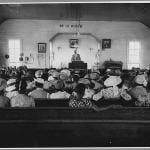 Remember that big stink a few years ago over HarperCollins’ plans to commission brand new Narnia books that were not written by C.S. Lewis? The news in that department got mixed up with another bit of news regarding HarperCollins’ plans to downplay the Christian elements in Lewis’s books in their marketing, and somehow this got interpreted by many, many people as an indication that HarperCollins was actually going to eliminate the Christian themes from the books themselves.
Remember that big stink a few years ago over HarperCollins’ plans to commission brand new Narnia books that were not written by C.S. Lewis? The news in that department got mixed up with another bit of news regarding HarperCollins’ plans to downplay the Christian elements in Lewis’s books in their marketing, and somehow this got interpreted by many, many people as an indication that HarperCollins was actually going to eliminate the Christian themes from the books themselves.
FWIW, I am proud to say that I was one of the more cautious, skeptical people to report, however briefly, on that whole affair, in a brief news summary I wrote here; and I felt vindicated a week or two later, when the much more thorough Ted Olsen of Christianity Today’s Weblog shared my caution and skepticism, partly on the strength of a statement from HarperCollins themselves.
Sinc then, I’d largely forgotten about the plans to commission new Narnia books. Until today, when I received an e-mail that mentioned this book, which apparently came out five months ago.
Note whose name is more prominent. “C.S. Lewis” is no longer a person, he’s a brand name. Then again, maybe the difference in prominence and typefaces owes something to the fact that many readers wouldn’t have a clue how to pronounce “Hiawyn Oram”.
Anyway, I wonder if this — a 40-page illustrated book for very young children — was really what all the fuss was about. It’s almost more of a toy than a story, and it’s not exactly a novel like the books that Lewis wrote. Or are some of those in the works, too?
Oh, and just for the record: I am, in principle, in favour of books of this sort, if they help to make the characters and cultures of Narnia come alive. I’ve been reading Lewis’s original books lately, and one of my criticisms of them would be that he sometimes doesn’t show much interest in the worlds he creates; he seems to be more interested in slapping together a pastiche of his favorite myths and things, rather than in giving his world an internal reality that can excite his curiosity and ours. The opening chapters of Prince Caspian are a vast improvement on The Lion, the Witch and the Wardrobe for precisely this reason: the Narnia of the first book is little more than an accessory to the Pevensies’ adventures, but the Narnia of the sequels finally becomes a world unto itself, a place with its own internal reality. So, I’m all in favour of short stories that bring the characters to life for their own sake, without necessarily serving some larger “theme”.
But I say all that without having read this particular book.











